
The Automobile Alley neighborhood and Automobile Alley Historic District in Oklahoma City is an upscale Urban area, located roughly along North Broadway Avenue in Downtown Oklahoma City. The district contains numerous low and mid-rise heritage buildings once home to the city's automobile dealerships, that today hosts many of the city's top bars and restaurants, retail shops, and urban residences alongside modern construction consisting mostly of residential housing and hotels. Automobile Alley is listed in the National Historic Register of neighborhoods.
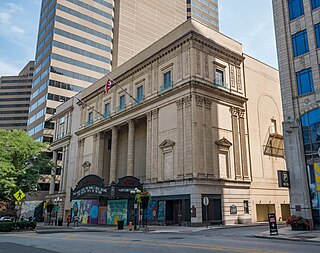
The Ohio Theatre is a performing arts center and former movie palace on Capitol Square in Downtown Columbus, Ohio. Known as the "Official Theatre of the State of Ohio", the 1928 building was saved from demolition in 1969 and was later completely restored. The theater was declared a National Historic Landmark in 1977.

Columbus Union Station was an intercity train station in Downtown Columbus, Ohio, near The Short North neighborhood. The station and its predecessors served railroad passengers in Columbus from 1851 until April 28, 1977.

Downtown Columbus is the central business district of Columbus, Ohio. Downtown is centered on the intersection of Broad and High Streets, and encompasses all of the area inside the Inner Belt. Downtown is home to most of the tallest buildings in Columbus.

The Cass Motor Sales is a commercial building located at 5800 Cass Avenue in Detroit, Michigan, USA. It was listed on the National Register of Historic Places in 1986.
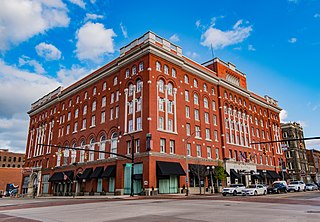
The Great Southern Hotel & Theatre is an historic hotel and theater building in Downtown Columbus, Ohio. The building currently operates as the Westin Great Southern Columbus and the Southern Theatre.
The culture of Columbus, Ohio, is particularly known for museums, performing arts, sporting events, seasonal fairs and festivals, and architecture of various styles from Greek Revival to modern architecture.

The Welsh Presbyterian Church is a historic former church in Downtown Columbus, Ohio, United States. Used as a church only for a few decades, the building has seen many uses over the ensuing decades, ranging from commercial to government-affiliated to social services. Because of its architecture, the building has been named a historic site.

The Ford Motor Company - Columbus Assembly Plant is a historic building in Downtown Columbus, Ohio. The Ford plant was constructed in 1914, to designs by John Graham. The plant operated until 1939. In later years, it became the Kroger Co. Columbus Bakery, operating until 2019. The building was sold in 2020, and is planned to be redeveloped into a large residential complex, announced in 2021. The building was added to the National Register of Historic Places and Columbus Register of Historic Properties in 2021.

The Schlee-Kemmler Building is a historic building in Downtown Columbus, Ohio. The building was listed on the National Register of Historic Places in 1982 and the Columbus Register of Historic Properties in 1983. It was also included in the South High Commercial Historic District, added to those registers in 1983 and 1987, respectively.
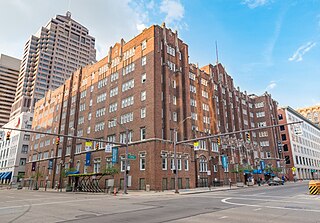
The Downtown YMCA is a historic former YMCA building in Downtown Columbus, Ohio. It was the largest YMCA resident facility in the United States. It was listed on the National Register of Historic Places in 1993. The seven-story building was designed in the Jacobethan Revival and Late Gothic Revival styles by Chicago architecture firm Shattuck & Layer.
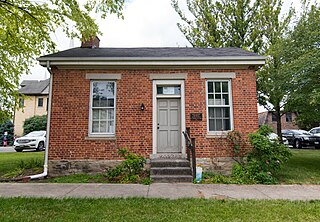
The Sullivant Land Office is a historic building in the East Franklinton neighborhood of Columbus, Ohio. It was listed on the National Register of Historic Places in 1973 and the Columbus Register of Historic Properties, along with the Gen. William Henry Harrison Headquarters, in 1985. The small brick building was built c. 1822. Its original use was as a single-room real estate office, although it was later expanded. At the time of construction, Lucas Sullivant was selling and giving away pieces of land, and Franklinton became the county seat of Franklin County. The building is the only remaining structure associated with Lucas Sullivant in the Franklinton area. In the early 1980s, the Columbus Recreation and Parks Department moved the building from its original location at 714 W. Gay St. to 13 N Gift St., behind the William Henry Harrison house. The move was prompted because the building was endangered in its original location, with vandalism, deterioration, and plans to create a parking lot for a car dealership on the site.

The Standard Building, also known as the Blue Cross Building or as the Gugle Building, is a historic building in Downtown Columbus, Ohio. The building was built in 1912. Early tenants included the Lancaster Tire & Rubber Company, the Mutual Life Insurance Company, Irwin Manufacturing Company, and the Grid Graph Company. It also served as the regional headquarters of Standard Oil of Ohio, from 1917 to 1955, occupying its sixth (top) floor. It was listed on the National Register of Historic Places and the Columbus Register of Historic Properties in 2019. Also in 2019, the building owner Connect Real Estate began redeveloping the building into apartments, with 45 units, including 35 micro studio apartments and 10 one-bedroom units. Connect Real Estate sought the building's historic listings for tax credits in refurbishing it. The realty company owns the adjacent Winders Motor Sales Company building, which it has separately listed on historic registers to make restoration more affordable.
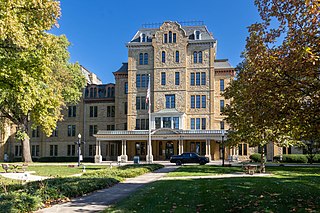
Columbus Public Health is the health department of Columbus, Ohio. The department is accredited by the Public Health Accreditation Board. The department dates to 1833, when the city's mayor appointed five citizens to help with its cholera outbreak. It became a permanent body to activate whenever health emergencies arose.

High Street is a major thoroughfare in Central Ohio, predominantly in Franklin County and Columbus. It stretches from the northern border of Columbus in Delaware County south to the southern boundary of Franklin County just past Columbus's municipal boundaries. The street is considered one of Columbus's two main roads, along with Broad Street.
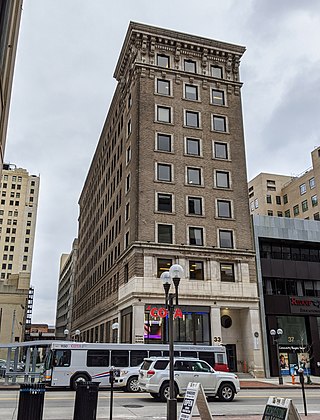
The William J. Lhota Building is a historic office building on High Street in downtown Columbus, Ohio. The building is primarily known as the headquarters of the Central Ohio Transit Authority (COTA), the city's transit system. It is owned by COTA, with some office space leased to other organizations. The building was added to the National Register of Historic Places as part of the High and Gay Streets Historic District in 2014.

The Ohio Finance Building is a historic building in Downtown Columbus, Ohio. It was listed on the National Register of Historic Places in 2014.
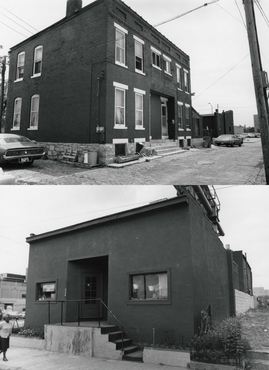
The Elijah Pierce Properties were historic buildings in Downtown Columbus, Ohio. They were listed on the National Register of Historic Places in 1983.
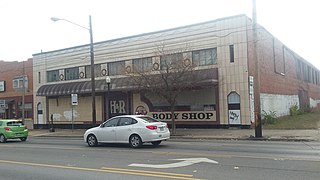
The McClure-Nesbitt Motor Company is a historic automobile dealership in the South of Main neighborhood of Columbus, Ohio. It was listed on the Columbus Register of Historic Properties in 2017, and was listed on the National Register of Historic Places in 2024.

171-191 South High Street is a pair of historic buildings in Downtown Columbus, Ohio. The commercial structures have seen a wide variety of retail and service uses through the 20th century, including shoe stores, groceries, opticians, hatters, jewelers, a liquor store, and a car dealership. Both exhibit early 20th century façades; 185-191 South High was constructed in 1906, while 171-177 South High was constructed sometime in the 19th century and was remodeled in the second decade of the 20th century. The latter building was once part of the Lazarus Block, holding the original Lazarus department store. The store grew to encompass a group of seven buildings on the site until it moved to the Lazarus Building in 1909. The same building was again noted in the 1930s, for housing the first Kroger store in Downtown Columbus, which was considered the first supermarket in the city. The buildings, the nearby Ohio National Bank building, and a garage building were sold to a development company in 2023. The developer plans to renovate the bank building and demolish all other structures on the block. In June 2023 the buildings were placed on the Columbus Landmarks Foundation's Most Endangered List.





















